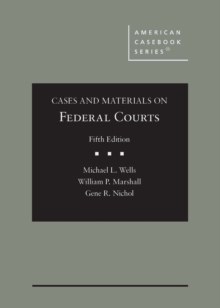
Contract and Related Obligation : Theory, Doctrine, and Practice Hardback
by Robert S. Summers, Robert A. Hillman, David A. Hoffman
Part of the American Casebook Series series
Hardback
Description
This casebook focuses on the rules and principles of contract law, as well as the lawyer's role in planning and drafting contracts.
Chapter One traces a contract case from the agreement stage, to a breakdown in the parties' relationship, to a lawsuit, to a decision in the trial court, and finally to the appellate court's opinion.
It includes supporting material, including the parties' agreement, a correspondence from the lawyer to the client, the complaint, a motion to dismiss, the answer, the trial judge's charge to the jury, the special verdict form, the trial judge's decision on motions after the verdict, and the appellate court opinion.
These materials help students understand where cases come from and lawyers' various roles, including planning, negotiating, counseling, drafting, as well as litigating.
Following the introduction, this casebook presents extensive material on the theory and practice of transactional planning and drafting, as well as additional materials from lawyers involved in the cases. The Eighth Edition offers comprehensive coverage of contract law theories of obligation, including bargain, promissory estoppel, unjust enrichment, and tort arising in the contract setting.
This edition includes new cases and secondary sources on developing issues of contract law.
In particular, the casebook introduces several new readings on electronic contracts, algorithmic contracting, and the relationship of contracting to public health.
Many of the secondary readings have been condensed and summarized, and the overall book has been streamlined.
The casebook retains its strength in traditional subjects such as good faith, parol evidence, gap filling, conditional obligation, and breach, but the Eighth Edition contains fewer pages (and one less chapter) than earlier editions and is suitable for a 4, 5 or 6 hour course.
Information
-
Available to Order - This title is available to order, with delivery expected within 2 weeks
- Format:Hardback
- Pages:1275 pages
- Publisher:West Academic Publishing
- Publication Date:30/09/2021
- Category:
- ISBN:9781684670154
Other Formats
- Hardback from £320.00
Information
-
Available to Order - This title is available to order, with delivery expected within 2 weeks
- Format:Hardback
- Pages:1275 pages
- Publisher:West Academic Publishing
- Publication Date:30/09/2021
- Category:
- ISBN:9781684670154










